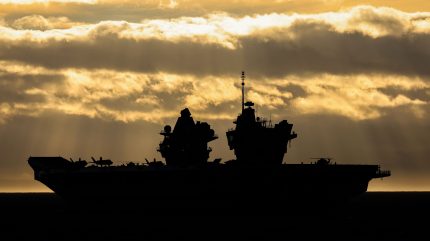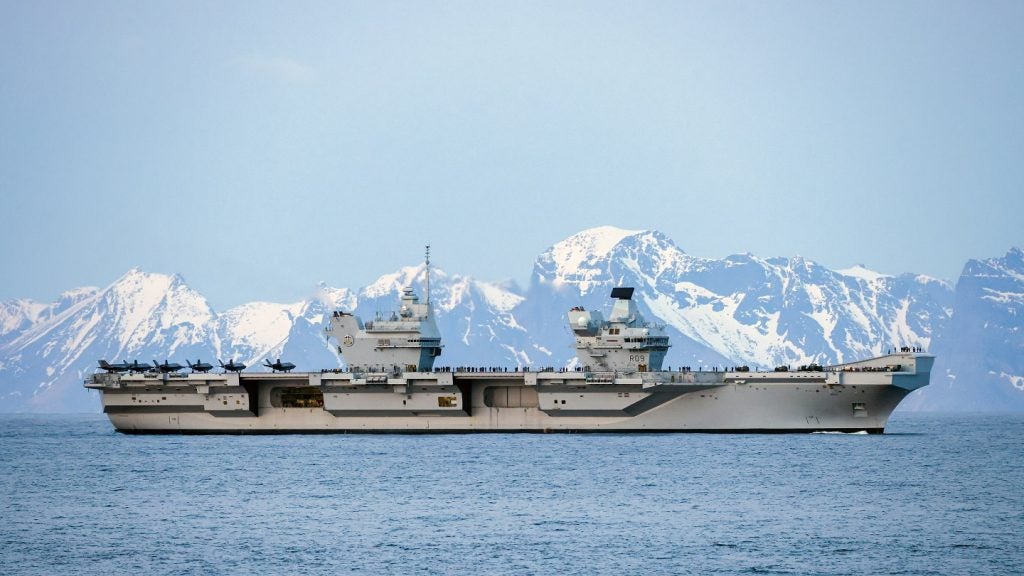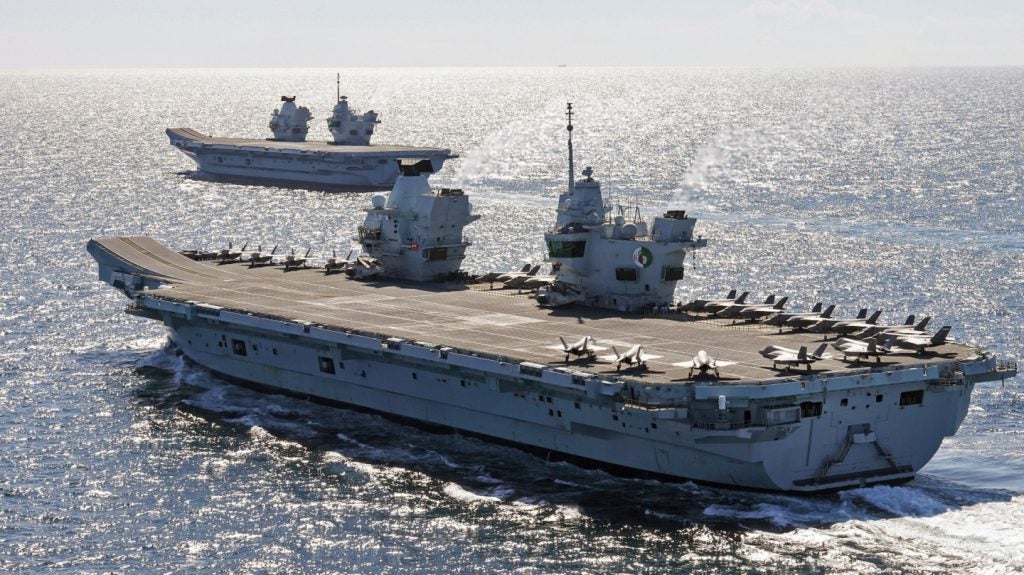
While the UK government has continued to reiterate the importance of aircraft carriers to the country’s defence portfolio, the implications of upcoming departmental budget cuts as part of the Treasury’s cost savings measures could impact the future of HMS Queen Elizabeth and HMS Prince of Wales.
Despite the UK economy growing at a faster rate than any of its G7 partner countries, the new Labour government’s insistence of a £22bn ($28.5bn) black hole in public finances and persistent negativity regarding the country’s economic outlook could see defence budgets face significant pressures.
Should this be the case, all military services will look to reduce costs where they can and the Ministry of Defence will potentially scale back or delay acquisition projects.
The Royal Navy will be no exception, and the relative inactivity of the service’s two aircraft carriers, combined with each suffering mechanical problems that have required repairs, could see each vessel taking turns in being placed in ‘extended readiness’, effectively mothballed by another name.
UK government stance on carrier capability
The UK government is keeping most of its defence cards close to its chest, as it, or rather the artificial intelligence tasked with performing the role, filters through the submissions of the Strategic Defence Review, which will report in 2025.
Asked by the opposition Conservatives what assessment had been made of the potential impact of the Strategic Defence Review on the aircraft carrier capabilities of the Royal Navy, Armed Forces Minister Luke Pollard stated on 24 October 2024, that “aircraft carrier capabilities” were “important to defence”.
However, Pollard’s statement continued, speaking to the “importance of maritime power more broadly”, which he said was highlighted by the Royal Navy’s response to the Houthi attack on commercial shipping in the Red Sea through 2024.
It should be highlighted that the Royal Navy response was centred on the use of its Type 45 air defence destroyers, which operated well, claiming dozens of kills of Houthi drones and anti-ship missiles fired at civilian ships. The absence of a Queen Elizabeth-class carrier was notable, given their relative proximity to the region and theoretical ability to embark an air defence group.
Could an Albion class model be used for UK carriers?
With HMS Prince of Wales tasked to perform its role as the lead ship of the 2025 carrier strike group (CSG) deployment, which will see the CSG head into the Indo-Pacific region, taking with it’s the vast majority of available UK F-35B fighters, leaves HMS Queen Elizabeth potentially vulnerable.
The concept of a major two-ship class of Royal Navy warship taking turns in mothballs in not alien to the service, with the Albion-class amphibious assault ships (comprised of HMS Albion and HMS Bulwark) having been subject to this process since 2010.
Each of the Albion class spend around 6-7 years mothballed, gradually being worked up to readiness as the time comes for them to take their turn on the high seas. The move reduces operating costs for the Royal Navy and frees up the bulk of the 325-person crew back into the wider naval pool.
In January 2024 it was revealed that intake to replace sailors leaving the Royal Navy had dropped 22.1% in the year up to 22 March 2023, indicative of wider recruitment challenges and pressures on available personnel. With a complement of around 700 personnel, the Queen Elizabeth-class carriers soak up a large pool of available, personnel.
As of January 2024, there were 31,910 personnel in the Royal Navy and Royal Marines, a reduction from 33,010 recorded in January 2023.

The inaugural UK CSG deployed in 2021, meaning a four-year gap between that operation and the second deployment in 2025. Conceivably, HMS Queen Elizabeth of HMS Prince of Wales could spend a similar time in extended readiness, with operational periods providing time to work up to the four-yearly CSGs, spending the remaining time in European waters committed to UK and Nato training missions.
Should the UK require air strike options, it could call on its sovereign base areas in Cyprus, or allied facilities in Oman and the United Arab Emirates, for operations in the MENA region.
The absence of a UK carrier filling in for the departure of the USS Gerald R Ford and its carrier strike group from the Mediterranean region in early 2024, deployed following the outbreak of hostilities between Israel and Hamas in October 2023, is indicative of more preferable solutions being chosen by the UK government.
This is despite the fact that a key, official, raison d’etre of the creation UK fleet carriers was their ability to “slot into” US Navy deployments where needed.
Problems with UK aircraft carriers
Both of the Queen Elizabeth-class aircraft carriers have encountered difficulties since entering service, issues that have required repairs and taken them out of service for several months, even years.
In October 2020 HMS Prince of Wales sustained major flooding in its engine room following a burst fire main which caused significant damage to its electrical switchboards.
In August 2022, HMS Prince of Wales had only just set off for its trans-Atlantic crossing to participate in exercises off the US east coast when an issue with the starboard shaft was identified, forcing an immediate return to Portsmouth Naval Base.

After several weeks spent alongside the Princess Royal Jetty, where the vessel’s 33-tonne starboard propellor was removed, HMS Prince of Wales was dispatched, under reduced speed, to Babcock’s Rosyth Dockyard in the Firth of Forth for drydock repairs.
By May 2023 it was calculated that in the 1,251 days HMS Prince of Wales was commissioned into service, the vessel has spent just 267 days at sea, with 411 days spent alongside or in dock undergoing repairs. Days spent by HMS Prince of Wales at sea, as a percentage of days commissioned in service, amount to just 21.3%.
In February 2024, HMS Queen Elizabeth was unable to kickstart Nato’s Exercise Steadfast Defender, after the discovery of “an issue” with the coupling of the starboard propellor shaft, a problem that officials said was not related to those suffered by HMS Prince of Wales.







